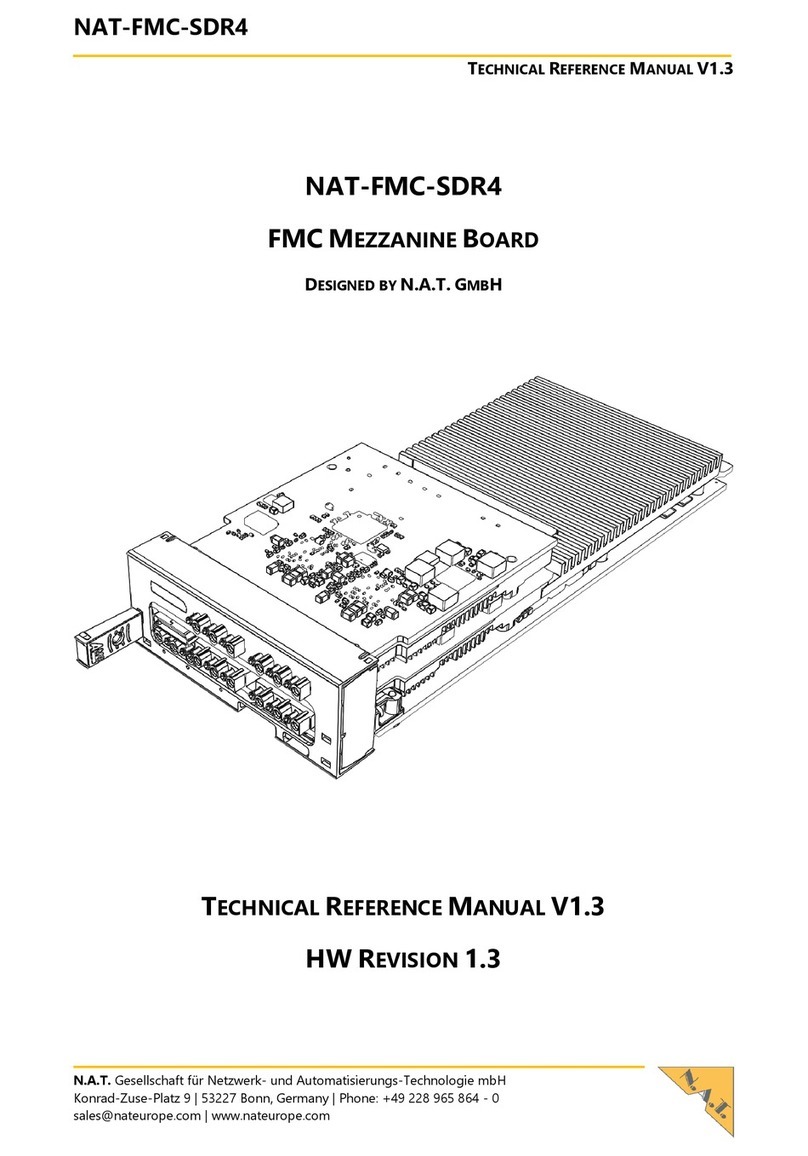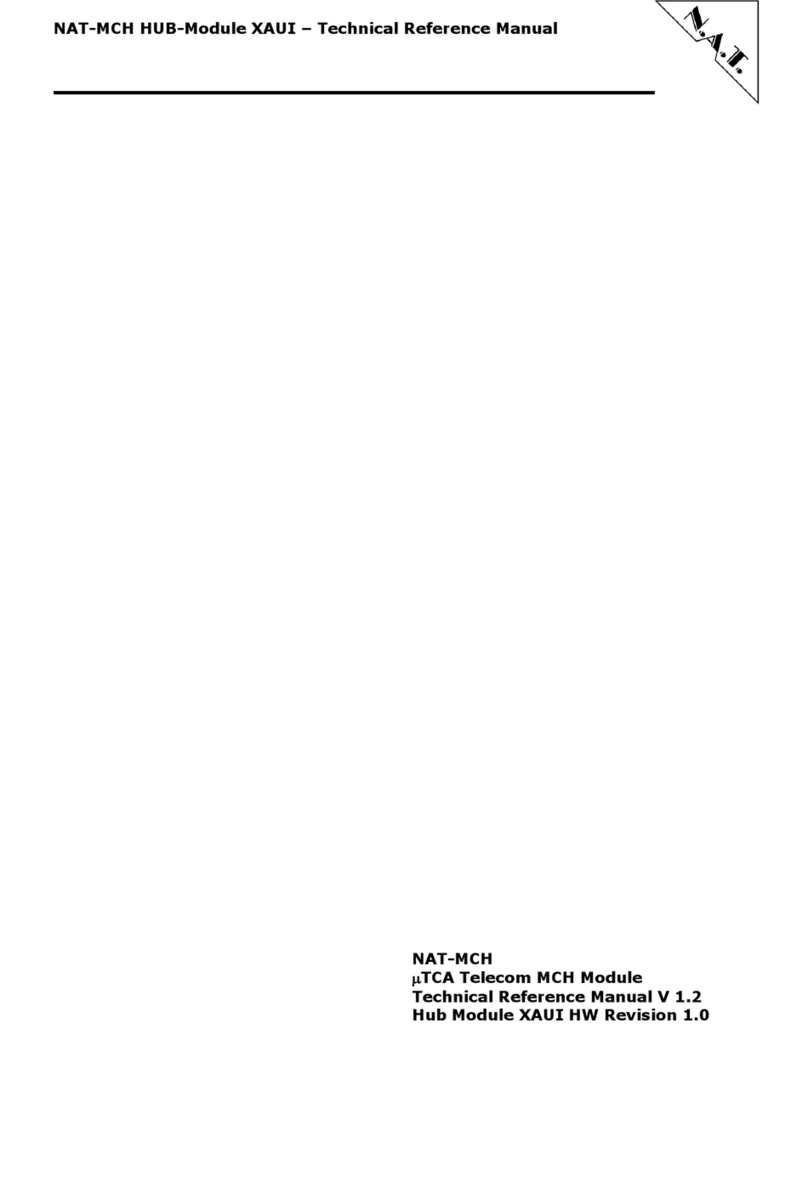
NAT-MCH HUB-Module PCIe –Technical Reference Manual
Version 1.2 © N.A.T. GmbH 4
Table of Contents
DISCLAIMER ....................................................................................................... 3
TABLE OF CONTENTS .......................................................................................... 4
LIST OF TABLES .................................................................................................. 5
LIST OF FIGURES................................................................................................ 5
CONVENTIONS.................................................................................................... 6
1INTRODUCTION ........................................................................................... 7
2OVERVIEW ................................................................................................... 8
2.1 MAJOR FEATURES......................................................................................... 8
2.2 BLOCK DIAGRAM ......................................................................................... 9
2.3 LOCATION DIAGRAM ....................................................................................10
3BOARD FEATURES ...................................................................................... 11
3.1 PCI EXPRESS SWITCH PLX PEX8748 ...............................................................11
3.2 MICROCONTROLLER .....................................................................................13
3.3 FPGA .....................................................................................................13
3.4 MULTIPLEXING UNITS ...................................................................................13
3.5 PCIE INTERFACES .......................................................................................13
3.6 INTERFACE TO NAT-MCH BASE-MODULE ..........................................................13
3.7 INTERFACE TO NAT-MCH CLK-MODULE ............................................................13
4HARDWARE ................................................................................................ 14
4.1 LEDS......................................................................................................14
4.2 CONNECTORS ............................................................................................15
4.2.1 CON1: AMC Connector to 3rd tongue ...................................................16
4.2.2 CON2: AMC Connector to 4th tongue ...................................................18
4.2.3 CON3: Connector to NAT-MCH CLK/BASE-Module .................................20
4.2.4 JP1: JTAG programming interface .......................................................20
4.2.5 J1: Connector to optional Root-Complex..............................................21
5PROGRAMMING NOTES .............................................................................. 22
5.1 SPI INTERFACE ..........................................................................................22
5.1.1 SPI-Interface –Default mode.............................................................22
5.1.2 SPI-Interface –Update mode .............................................................22
5.2 I²C INTERFACE ..........................................................................................22
5.3 REGISTER.................................................................................................22
5.3.1 Board Identifier Register ...................................................................22
5.3.2 PCB Revision Register .......................................................................23
5.3.3 Atmel Version ..................................................................................23
6BOARD SPECIFICATION ............................................................................. 24
7INSTALLATION .......................................................................................... 25
7.1 SAFETY NOTE ............................................................................................25































